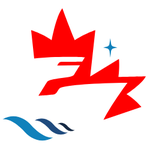Activity
-
CMISA posted an articleNew DARPA opportunities see more
Program Solicitation: Higher-Order Composite Resonators for Extra resilience (HORCREX)
Office: Defense Sciences Office (DSO)
Proposal Due Date: 16 February 2025 by 1600 (ET)
Description: The Defense Advanced Research Projects Agency (DARPA) Defense Sciences Office (DSO) is issuing a Disruption Opportunity (DO), inviting submissions of innovative basic or applied research concepts in the technical domain of novel micromechanical oscillators for applications toward precision positioning and navigation systems. This DO is issued under the Program Announcement for Disruptioneering, DARPA-PA-24-04. HORCREX aims to advance the development of high-performance inertial sensors by addressing the challenges of achieving both excellent sensitivity and resilience to shock and vibration in a single sensing proof-mass. The concept of mode-locking provides a possible pathway to achieve a spectrum of operational frequencies, including low-frequency modes which can then be used to demonstrate extended dynamic range (low noise and shock and vibration resilience). DARPA is interested in exploring a variety of methods, including different methods for transducing multiple vibration modes of a sensing proof-mass and for managing frequency variation and relative phase fluctuations across the full dynamic range of operational conditions. Regardless of chosen approach, each performer should fully explore the design space through modeling, characterization, and experimentation of mode families, materials, transducers, and locking mechanisms to stabilize a multiple-mode mechanical sensing platform. HORCREX will thus improve sensor survivability and ensure sensor operation through extremes of dynamic range, such as pinpoint landing of an unmanned aerial vehicle (UAV) in a turbulent weather system.
SEE ATTACHED DOCUMENT AND LINK BELOW.
Link: https://sam.gov/opp/05d065e9eef1453093fb4762744c445e/view
________________________________________________________________________________________________________________________________
DARPA reminds you to check out “Working with DARPA: Global Participation and Engagements” – an online training module for global participants interesting in learning about how to work with DARPA. This module is available on DARPAConnect – an online platform that aims to broaden DARPA’s reach and stimulate growth and collaboration with small businesses and education institutions new to the national security space.
DARPA relies on global partnerships with fellow members of the international science and technology ecosystem to achieve its mission. In this module, you will learn more about opportunities for global participants to work with DARPA, helpful hints and tips for members of the international community, and success stories from previous DARPA programs with contributions from organizations outside of the United States.
Not a member of DARPAConnect? Visit the DARPAConnect Registration page to sign up for a free account and gain access to the full suite of DARPAConnect lessons, resources, and more.
-
CMISA posted an articlekeeping modern ships safe from catastrophic accidents see more
In this article we explore some of the key advances since the days of paper charts and sextants that are keeping modern ships safe from catastrophic accidents.
The officer of the watch on the bridge of a modern cargo ship or cruise liner is responsible for the safe navigation of these giants of the sea. They rely on an array of navigational technology to safely find their way and avoid collisions with other ships or natural obstacles. But how has navigational technology advanced in the past 50 years?
“Steady as She Goes” – Navigating a Ship 50 Years Ago
Even in the 1960s and 1970s, ships already had some impressive modern technology available. The increasing accuracy and reliability of gyrocompasses had made error-prone magnetic compasses obsolete except as a backup. Gyrocompasses rely on a rapidly spinning gyroscope to detect the rotation of the earth and point towards the centre of rotation at the North Pole.
The widespread use of radar onboard ships, originally developed for military application started to find application in civilian ships from the 1940s. This was a major advance allowing ships officers to effectively see in the dark or even in thick fog or low cloud. Later, Automatic Radar Plotting Assistance was added to help make sense of complex traffic situations by keeping track of objects the radar had picked up.
VHF radio was widely adopted and allowed ship-to-ship and ship-to-shore voice communication, replacing signal flags and semaphore. To fix the ship’s position, radio direction finding was used. Hyperbolic radio-fixing systems such as LORAN-A and DECCA were considered the state of the art in navigational technology. By triangulating the bearing of radio signal transmitters at known locations, the ship’s navigator was able to fix the ship’s position down to the accuracy of approximately one nautical mile, even in the open ocean. These radio-fixing aids simplified the navigator’s problem of determining how far from land the ship was but did not do much for precise coastal pilotage. Skilled local pilots with the ability to steer the ship from visual marks with knowledge of local currents and hazards remained critical to safe navigation.
View Full Article Here
-
CMISA posted an articleThales as part of the TACTICOS combat management system (CMS) upgrade. see more
Canadian navigation solution provider OSI Maritime Systems (OSI) has been contracted to provide the integrated navigation system for mid-life modernization (MLM) of Bung Tomo-class multi-role light frigate (MRLF).
View Online

